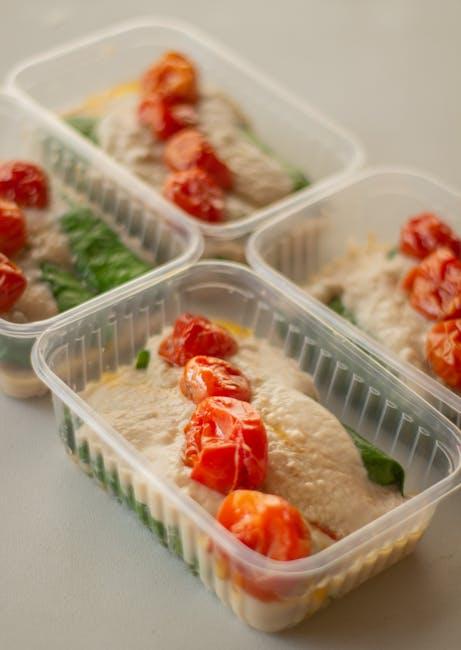Embarking on a weight loss journey can often feel like navigating a maze of conflicting information and fad diets. However, the key to sustainable and healthy weight loss lies in constructing a balanced diet that nourishes your body while promoting fat loss. In this guide, we will demystify the process of building a balanced diet tailored for weight loss, empowering you with the knowledge and strategies needed to achieve your goals. By focusing on nutrient-dense foods, proper portion sizes, and mindful eating habits, you can create a sustainable eating plan that supports your body’s needs and enhances your overall well-being. Let’s dive into the essentials of crafting a balanced diet that not only aids in shedding those extra pounds but also fosters a healthier lifestyle.
Understanding Macronutrients and Their Role in Weight Loss
Macronutrients are the cornerstone of any diet, especially when aiming for weight loss. These essential nutrients, which include carbohydrates, proteins, and fats, each play a distinct role in your body. Carbohydrates are the body’s primary energy source, but it’s crucial to choose complex carbs such as whole grains and vegetables over refined sugars. Proteins are vital for building and repairing tissues, making them key for maintaining muscle mass while losing weight. Opt for lean sources like chicken, fish, and legumes. Fats often get a bad rap, but healthy fats found in avocados, nuts, and olive oil are essential for hormone production and satiety.
To effectively incorporate macronutrients into your weight loss plan, focus on balance and moderation. Consider the following guidelines for a well-rounded diet:
- Carbohydrates: Aim for about 45-65% of your daily calorie intake.
- Proteins: Make up 10-35% of your daily calories to support muscle health.
- Fats: Keep it to 20-35% of your total calorie intake, emphasizing unsaturated fats.
By understanding the role of each macronutrient, you can create a balanced diet that not only supports weight loss but also promotes overall health and wellness.

Crafting a Meal Plan That Suits Your Lifestyle
Designing a meal plan that aligns with your daily routine and preferences is essential for achieving sustainable weight loss. Start by identifying your personal dietary needs and preferences. Consider factors like your activity level, dietary restrictions, and even your cooking skills. This approach ensures that the plan is not only effective but also enjoyable. Customizing your meals will make it easier to stick to your diet, helping you achieve your weight loss goals without feeling deprived.
- Assess Your Schedule: Determine the best times for meals and snacks based on your daily routine.
- Prioritize Nutrient-Dense Foods: Incorporate plenty of fruits, vegetables, lean proteins, and whole grains.
- Include Variety: Rotate different types of foods to keep meals interesting and nutritious.
- Plan for Flexibility: Allow for occasional treats or meals out to maintain a balanced approach.
Remember, the key to a successful meal plan is consistency and adaptability. By planning meals that fit seamlessly into your lifestyle, you not only foster healthier eating habits but also pave the way for long-term success in your weight loss journey.

Incorporating Whole Foods for Optimal Nutrition
When aiming for weight loss, whole foods play a pivotal role in creating a balanced diet that not only aids in shedding pounds but also enhances overall health. Whole foods are minimally processed and retain their natural nutrients, making them an excellent choice for anyone looking to improve their nutritional intake. By focusing on foods like fresh fruits, vegetables, whole grains, and lean proteins, you can ensure that your body receives essential vitamins and minerals while keeping calorie intake in check.
- Fruits and Vegetables: Packed with fiber and antioxidants, these foods help you feel full longer and fight inflammation.
- Whole Grains: Foods like quinoa, brown rice, and oats are high in fiber and help regulate blood sugar levels.
- Lean Proteins: Incorporate chicken, fish, and legumes to build muscle and maintain satiety.
- Healthy Fats: Include sources such as avocados, nuts, and olive oil to support brain health and hormone balance.
Emphasizing whole foods in your diet not only aids in weight management but also supports long-term health benefits. By making these nutrient-rich choices, you can build a foundation for a sustainable and satisfying eating plan.

Monitoring Portion Sizes to Achieve Your Goals
Understanding and controlling the amount of food you consume is crucial for weight loss success. Portion sizes can be deceiving, especially when dining out or preparing meals at home. To ensure you’re eating the right amounts, it’s helpful to become familiar with what a serving size actually looks like. This doesn’t mean you need to carry a scale everywhere; instead, use visual cues or your hand as a guide. For instance, a serving of protein should be about the size of your palm, while carbohydrates like rice or pasta should fit into a cupped hand.
- Protein: Aim for a portion the size of your palm.
- Vegetables: Fill half your plate for a nutrient-dense meal.
- Carbohydrates: Limit to a fist-sized portion.
- Fats: A serving should be about the size of your thumb.
It’s also beneficial to use smaller plates and bowls, which can naturally help you serve smaller portions and prevent overeating. Mindful eating practices, such as eating slowly and savoring each bite, can further support your goals by allowing your body time to register fullness. Remember, consistency is key, and these small adjustments can lead to significant changes over time.
